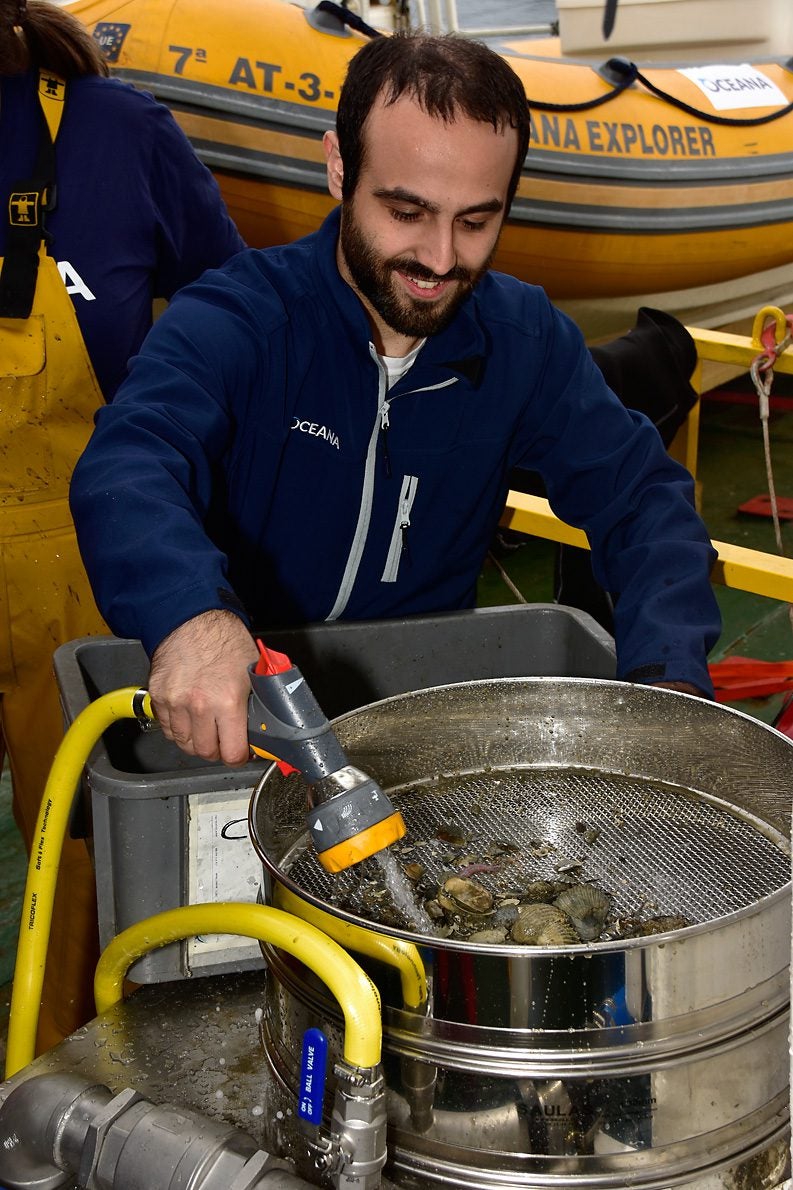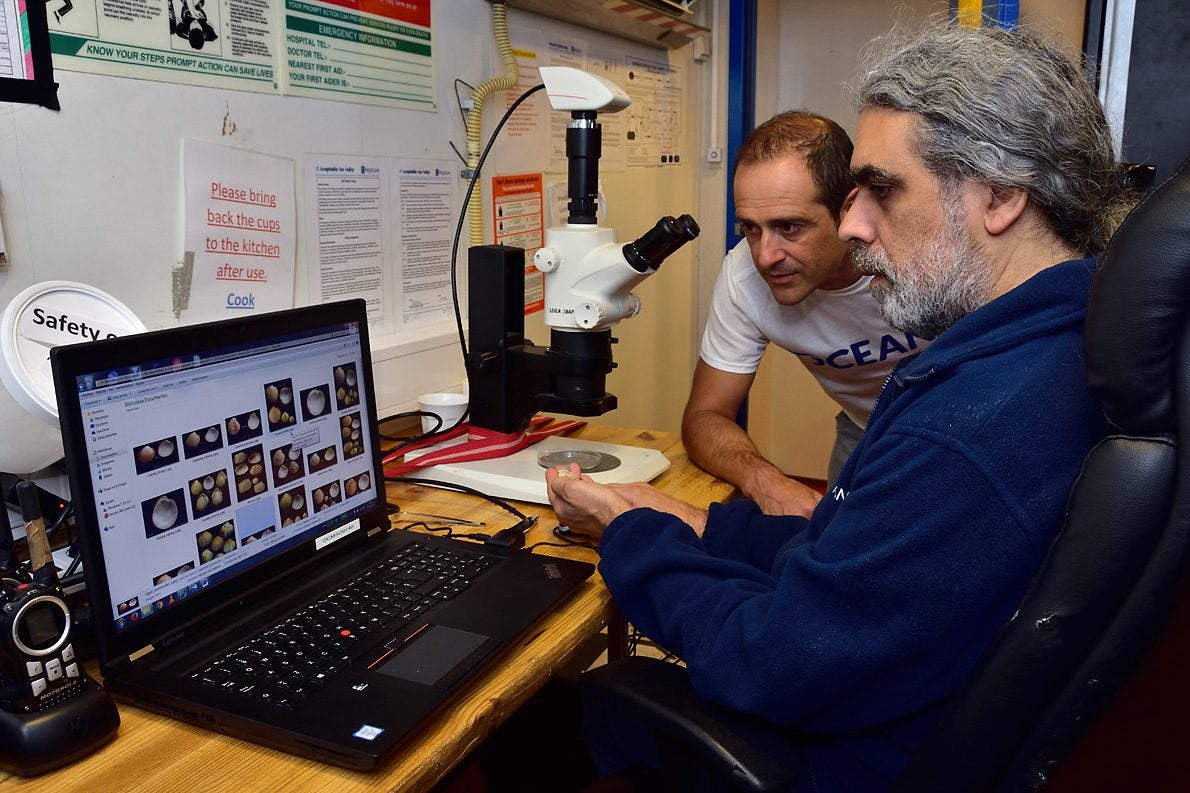July 19, 2017
How can seabed sampling help us save the oceans?
Research expeditions at Oceana are composed of several elements that help collect, identify and document marine communities living on the ocean floor. One method that covers all of these elements is grab sampling which is typically used during Oceana’s expeditions. Although for a non-scientist, grab sampling can give an impression of “playing with the mud,” it is in fact another way of how we study the sea floor. You would be surprised how rich marine life is here; you could find: shells, worms, sponges, brittle stars, sea urchins and many more.
Regarded as a basic study in marine science, this rather ugly-looking but easy process requires consistency, patience and rigour, as it is usually repeated several times during a day while on expedition. By taking a part of sediment from the seafloor in different survey areas, marine scientists can have a better overview of the animals that inhabit it.
Several steps of the process
During our ongoing North Sea expedition, we analyse sediment samples to depths up to 500 metres using a device called a grab-sampler. Then we filter the material in a special device that resembles the functioning of a washing machine; the expedition team gently named it “Grabator” (you can read about it in one of our previous onboard diaries) due to the role it plays. A set of sieves embedded in the machine helps us work faster and more efficiently, since one part removes the sand while the other one drains the water.
Once the sediment has been washed away, we can clearly see and easily find the organisms that reside in the sample of mud we have collected from the bottom of the sea. Next, we separate them by category (e.g. all shells go together whilst worms form a separate group etc.), identify them, photograph them and put them into tubes that contain alcohol, which will preserve the collected elements. This part of the process is called sample sorting, and it happens in a mini-lab (it is a lab indeed!), where marine scientists register and store the hidden gems of the oceanographic research.
How can seabed sampling help us save the oceans?
Probably you’ve already asked yourself this question and the answer is that it doesn’t in a direct way. Seabed sampling is a complementary study that gives us information on sediment type and small animals that cannot be collected or identified with the help of our primary tool, which is a Remotely Operated Vehicle (ROV), or by professional SCUBA divers who operate to depths of 40 metres.
Due to the existing lack of information, the raw data coming from the seabed analysis are used to not only understand marine habitats, but also to find better ways to protect them. This information will be shared freely with representations of the governments, scientists and NGOs in the five nations whose waters we are currently studying (Denmark, Germany, The Netherlands, Norway & the United Kingdom). In fact, all of the findings gathered from the expedition will form the basis of proposals with the hope to contribute to concrete actions on the improvement of the marine protection of our seas.










